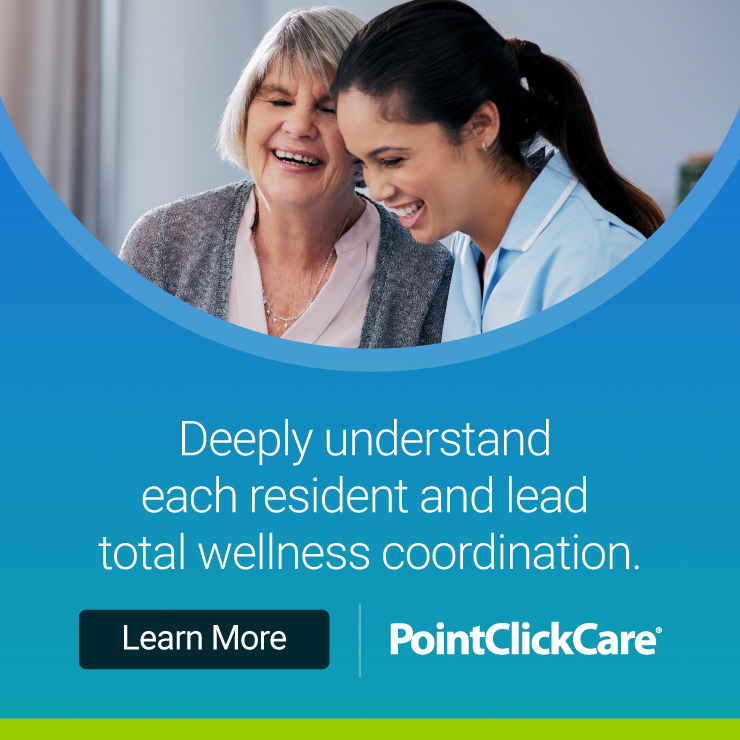Visual impairment is one of the most under treated of all disabilities.
By Susan Saldibar
Not all eyes are the same.
Not all vision problems are the same.
Not all vision impairment responds to the same treatment.
And not all senior living communities are good at matching the unique vision challenge to each resident.
It is for these reasons that Angela Edney, Occupational Therapist and National Clinical Director and Susan Almon-Matangos, Speech-Language Pathologist and National Clinical Director for Aegis Therapies, a Senior Housing Forum partner, are urging senior care providers to re-evaluate their current strategies for dealing with residents with vision impairment and eye disease. “Visual impairment is one of the most under treated of all disabilities,” says Susan. “Yet it ranks third among physical disabilities.”
The most common, age-related visual problems include:
- Central loss: Usually due to macular degeneration
- Peripheral loss: Usually due to glaucoma
- General blurring: Usually due to cataracts
Each is challenging and can be misinterpreted with unsettling results. Angela knows this from a personal experience:
“A relative of mine had glaucoma. Her daughter asked me to come and evaluate her. She wanted to know why her mom could sit for hours doing fine needlepoint work, only to claim her vision was bad when the daughter tried to get her up and moving around?
-
- The daughter’s diagnosis: her mom was ‘faking’ her vision problems to avoid doing things she didn’t want to do.
- The true diagnosis: loss of peripheral vision due to her glaucoma.
In fact, her mom could not see anything to each side of her. That’s a scary situation for someone attempting to cross a room. But it wasn’t the daughter’s fault. No one had taken the time to explain to her that her mom’s side vision was severely impacted!”
We can do better.
How can senior living communities get better at identifying types of vision impairment and develop successful compensatory and adaptive strategies for each? Here is what Angela and Susan recommend:
- Get educated on the nature of the impairment and how it impacts the resident. If you don’t, it can lead to false assumptions.
- Make sure you are making eye tests available to residents every year. “I’ve spoken with residents who are wearing very old-style glasses,” says Angela. “So I ask, ‘When was the last time you had your eyes checked?’ And more often than not, the answer is ‘Years’.”
- Make sure you are testing thoroughly: Use the right specialists to make the final determination. As an example, if a resident has macular degeneration, he or she will need to see a retina specialist.
Retrain the eyes to “see” differently.
Special vision skills can be developed for those residents with blind spots caused by macular degeneration and glaucoma. Residents can be trained to use a technique called Eccentric Viewing, which basically helps them find their preferred retinal locus (PRL), by identifying the spot adjacent to center of vision where objects become clearer. The goal is for the person to learn to utilize a different area of the retina to compensate for the central vision loss. It is a learned process and requires training and reinforcement.
Adaptive strategies help residents regain more independence.
For all vision challenges the following five strategies have been proven to be effective:
- Lighting: Increase lighting when possible. Use a light meter to determine optimal room lighting. Considerations include type of lighting, the direction of the lighting and the specific task. Consider rope lighting to light pathways. Use flashlights for spot lighting.
- Glare: Try to eliminate glare and reflection on shiny surfaces. Reposition beds and chairs away from high glare areas.
- Color and contrast: Use bright colors to distinguish between dinner items, such as plates, utensils and cups. Use fluorescent strips to help residents locate grab bars, door frames, and white-on-white objects such as sink, tub and toilet. Color code shelves and drawer dividers. Use bright colored pillows or throws on couches and chairs to increase contrast.
- Mobility and communication: Keep walkways clear of clutter. Create brightly colored signs throughout the building for better visibility. Create special markers to identify types of canned goods.
- Reading and writing: Use magnifying devices and spot lighting for reading, as well as large print drug labels.
And, yes, there are apps.
- LookTel money reader: Announces the denomination of paper money when pointed at the bill. The developer is also working on expanding the technology to reading labels and more.
- Color ID Free: Announces the color of any object it’s pointed at. Simple and easy to use, it is amazingly accurate and can even detect subtle differences in color.
- Light Detector: Emits a sound which intensifies as a light source is found and approached. It will find any lights left on or locate windows and exits.
- VM Alert: Detects motion as it approaches the user and warns them with a tone or an alarm.
Focusing on the big picture.
“Most senior care providers are not even aware of the sheer number of vision disorders and diseases, let alone the spectrum of care strategies that exist,” says Susan. “The important thing to keep in mind is that different vision challenges call for different strategies. By taking the time to care properly for the vision needs of residents and putting strategies in place to maximize their ability to function, senior care providers can give residents much more independence and keep them safe at the same time.”
For more information on treating residents with visual impairment and helping them become safer and more active at your community, visit the Aegis Therapies website.







